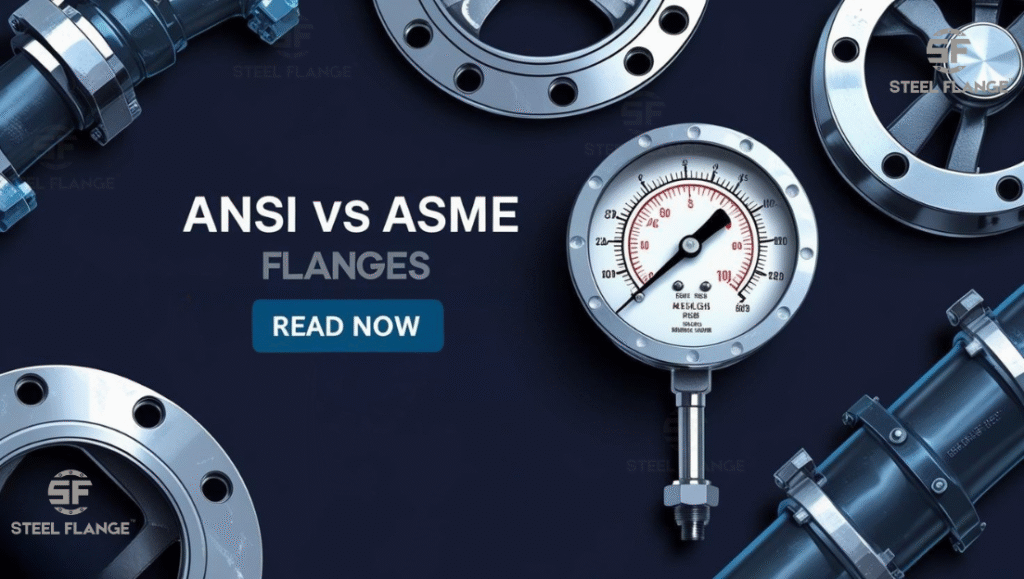ANSI vs ASME Flanges: Key Differences, Applications & Standards Explained
When it comes to industrial piping systems, flanges play a critical role in ensuring reliable connections between pipes, valves, pumps, and other components. Two commonly referenced standards for flanges are ANSI (American National Standards Institute) and ASME (American Society of Mechanical Engineers). While the terms are often used interchangeably, there are important distinctions you should know when sourcing or specifying steel flanges.

What Are ANSI and ASME Flanges?
ANSI and ASME are organizations that set engineering standards in the United States. ANSI approves standards developed by other bodies like ASME. When referring to flanges, most people mean ASME B16.5 flanges, which are commonly mislabelled as “ANSI flanges.” In fact, ANSI no longer publishes flange standards—ASME has taken over this responsibility with its B16.5 and B16.47 series.
So, while you might hear the term “ANSI flange,” it’s usually shorthand for ASME B16.5 compliant flanges.
Pressure Ratings and Classifications
ASME B16.5 defines flange dimensions and pressure ratings across several “classes,” including Class 150, 300, 600, 900, 1500, and 2500. These classes denote the pressure-temperature ratings a flange can withstand.
For example:
- Class 150 flanges can typically handle up to 285 psi at 100°F
- Class 300 flanges are rated up to 740 psi at 100°F
These pressure ratings drop as temperature increases and depend on the flange material. Selecting the right class is crucial for safety and system performance.
Applications of ANSI/ASME Flanges
These flanges are used across a wide variety of industries, including:
- Oil & Gas
- Petrochemicals
- Power Generation
- Water Treatment
- Food Processing
- Pharmaceuticals
They are essential in pipelines where regular inspection, cleaning, or maintenance is required.
Key Differences between ANSI and ASME Flanges
| Feature | ANSI | ASME |
| Governing Body | American National Standards Institute | American Society of Mechanical Engineers |
| Standard Status | Obsolete | Current industry standard |
| Standard Reference | Older ANSI B16.5 | ASME B16.5 (and B16.47 for larger sizes) |
| Design Considerations | May lack newer updates | Regularly updated for safety and compatibility |
| Industry Usage | Rarely used on new projects | Widely used globally |
Which Should You Choose?
For all practical purposes, ASME B16.5 flanges are the global standard. If a supplier refers to “ANSI flanges,” confirm they conform to ASME B16.5. This ensures compatibility, safety, and compliance with industry norms.
Conclusion
Understanding the difference between ANSI and ASME flanges is essential for anyone involved in piping design, procurement, or maintenance. ASME B16.5 is the go-to standard for most modern industrial applications, offering robust pressure ratings, international compatibility, and assured performance.
If you’re looking for high-quality ASME-compliant steel flanges, including Class 150 and Class 300 flanges, contact Steel Flange MFG Co. — a trusted manufacturer and supplier of forged, threaded, and custom pipe flanges.
